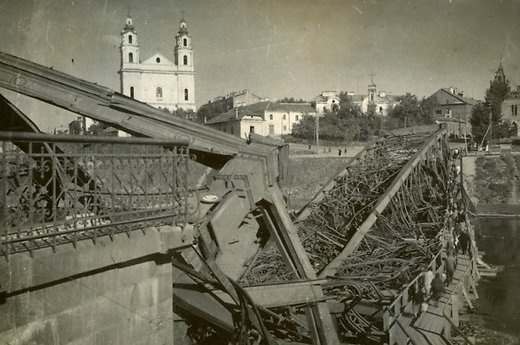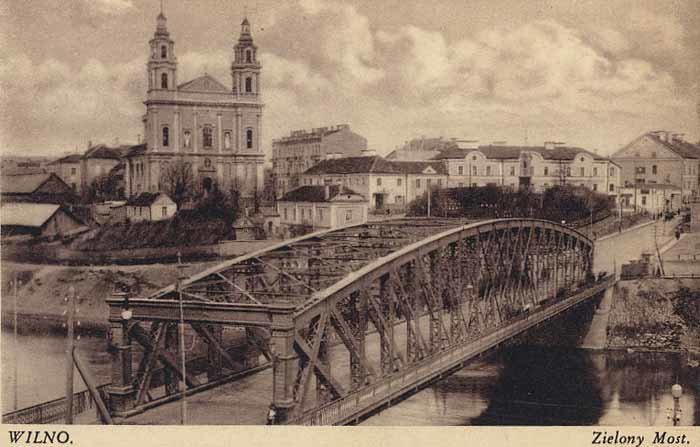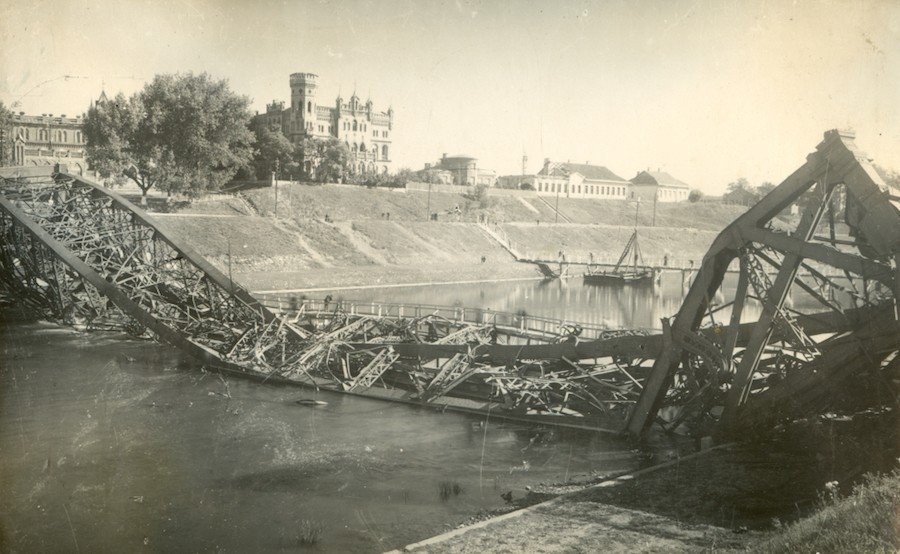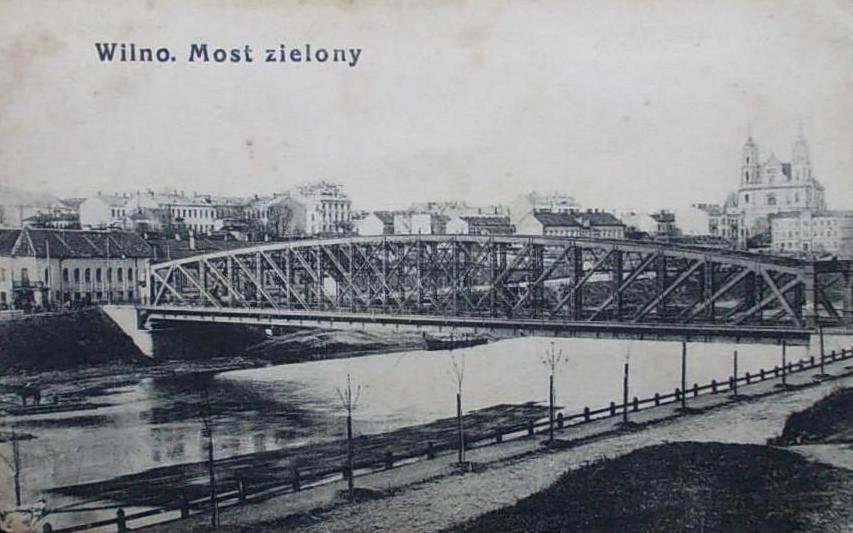Although the Green Bridge is often associated with the legendary Soviet sculptures, which in 2015 were removed, this place has an interesting and difficult history. The first historical information about the Green Bridge dates back to 1529. Then Albrecht Goštautas, the Vilnius voivode, received the privilege to build a brick bridge. Interestingly, you had to pay to cross the bridge. It is not yet known when the bridge first collapsed.
The bridge was rebuilt for the first time in the 1655th century. at the beginning The bridge did not live long, because in 1670. When Vilnius was attacked by the Moscow army, the bridge was burned by the order of hetman Jonuš Radvilas. Later, around 1673, an impressive, largest arched bridge in Europe was built in the capital, which in 1800 collapsed. Until 1766 the starting bridge had collapsed twice more. in XNUMX the wooden parts were painted green, and it was from that time that it got the name Green Bridge.
The bridge was destroyed, rebuilt and burned three more times. The last time, during the Second World War, the bridge was blown up by the retreating Germans. The bridge was blown up together with other strategic objects of the capital: a gas factory, a water pumping station, a power plant and other bridges in the city.
However, the bridge had to be finally dismantled, and for that the metal structures had to be blown up again. Due to the negligence of the workers, the work did not go as smoothly as expected: neither the blasting project nor the elementary calculations were made, and the work began without obtaining a permit. The bridge exploded. The blast was so powerful that it blew out windows and cracked the structures of nearby buildings. The bridge was (already successfully) blown up again and again. Only after that it was possible to talk about the restoration of the Green Bridge, and while it was not there, a temporary wooden bridge was built nearby.
The current, single-arched version of the bridge appeared in 1952, named after I. Cherniachovkis. In the same year, Soviet sculptures were erected on the four corners of the bridge.
Source/Photo: "Vilnius 1944: Photo Archive of Janos and Janušas Bulhakai".
Source/Photo: "Vilnius 1944: Photo Archive of Janos and Janušas Bulhakai", compiled by M. Matulytė. Vilnius: Lithuanian Art Museum, 2009.
Photo: allegro.pl






